 | ArronJoe Arron | Joe worked with Isabella Graef to define the role of Dyrk1a as the nuclear export kinase of NFATc family members, contributing to our understanding of the role of this kinase in producing the various phenotypes of Down Syndrome. He also studied mice containing the small molecule (MaRap) regulated allele of GSK3b made by Kryn Stankunas in the lab, showing with Karen Lui that one could rescue the mutant phenotype of the mice by administering MaRap. He is now at Genentech and he can now be reached at their web site. |
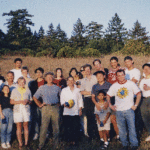 | BauchAngela Bauch | ngela was interested in the role of the vav protein in lymphocyte activation and along with Leslie Holsinger did studies that indicated this protein was essential for formation of the immune synap ase or cap (PNAS 2000). She is now at the EMBO in Heidelberg. |
 | BaumheuterSusan Baumheuter | Susan Baumheuter cloned HNF-1a and HNF-1b while in the lab. Susan helped set up the west coast branch of Celera at a time when it was just starting. Recently she decided to take off some time and raise her children. She can be reached at: sbaumneuter@msn.com. |
 | BayleHank Bayle | Hank made alleles of genes that can be rapidly and reversibly regulated with small molecules. He built alleles of Pax6 and GSK3b and made mice by homologous recombination that allow regulated degradation of these proteins. Perhaps most exciting are mice having alleles of FKBP12 that have a nuclear export sequence knocked into them allowing rapid export of proteins from the nucleus. These mice should allow an unprecedented level of control over the function of any nuclear protein. Hank contributed to many other studies in the lab including the design of new classes of macrolide based small molecule regulators and joined the faculty at Baylor University in the fall of 2006. He can be reached at: bayle@bcm.tmc.edu. |
 | BealsChan Beals | Chan worked with Neil Clipstone to define the mechanism of nuclear export of the NF-ATc1 protein by first defining mutations that prevented nuclear export and then purifying the kinases that specifically phosphorylate these sites. He found that GSK3 phosphorylates the specific sites after a still unidentified kinase primed the protein for later phosphorylation by GSK3. Chan returned to his home state of Washington where he now works for ICOS and can be reached at cbeals@icos.com |
 | BellOli Bell | Oli Bell and Nate Hathaway developed an approach to effectively study chromatin dynamics in living cells. The approach involves using small molecule inducers of proximity to add or quickly remove different chromatin regulatory activities to one allele of a single gene in living cells or even a living mouse. His work showed that one can create H3K9Me3 repressive domains that propagate away from an initiation site and reach a domain of over 10,000 bp. In addition, he tested the cellular memory of these domains and found that they are largely dependent on continuous stimulation and can be removed independent of proliferation. In August 2013 Oli will join the faculty of the IMP in Vienna. |
 | BiggarSteve Biggar | Steve was an MD/PhD student in the lab and studied the role of the SWI/SNF complex in yeast. He made a ts allele of SWI-2 and used it to show that the yeast complex is continuously necessary for transcription in yeast and that it plays a semi-redundant role with GCN5. With Steffan Ho he devised the system of regulated transcription using small molecule dimerizers that Ariad is using in its gene therapy clinical trials. Finally, Steve was able to use this system in yeast to show that signaling could induce either an on-off switch or graded changes depending of the context in which the signals are received. Steve decided to be an investment banker focusing on Biotech. You can contact him at: sbiggar@loews.com |
 | BramRick Bram | Rick Bram came to the lab after finishing his residency in Pediatrics. Rick defined the active cyclophilins and based on this information cloned the CAML protein that modulates Ca2+ influx in response to signals and interacts with the backside of the active cyclophins. Rich went to St Jude Research Institute after leaving the lab and is now Associate Professor at the University of Minnesota. He can be reached at: bramr@mayo.edu. |
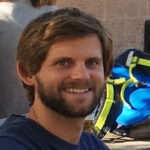 | BraunSimon Braun | Simon developed a way rapidly and reversibly activate or repress any gene using dCas9 and FKBP-FRB tagged regulators. He also discovered that the switch from npBAF to nBAF contributed to the cell cycle exit of neural progenitors and the end of their multipotent state. Simon joined the faculty of the University of Geneva. |
 | BriesewitzRoger Briesewitz | Roger developed a general method for synthesis of inhibitors to almost any protein based on the concept of borrowing the surface of endogenous proteins using synthetic small molecules. This approach is now in use by several biotech companies in an effort to make inhibitors of established therapeutic targets. Roger is presently a staff scientist at Advanced Medicine. He can be reached at: rbriesewitz@advmedicine.com. He will be joining the faculty at the University of Ohio in Oct of 2004. |
 | BrueggemannPenny Brueggemann | |
 | Cante-BarrettKirsten Cante’-Barrett | Kirsten Cante’-Barrett was a grad student from the Netherlands and found that negative selection in the thymus required transcription of the bim gene through a pathway that likely involves PKC. She and her husband returned to the Netherlands for post doctoral work and she can be reached at: K.Cante-Barrett@lumc.nl |
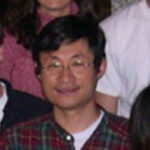 | ChangChing-Pin Chang | CP came into the laboratory to understand the role of NFAT signaling in heart development. He and Joel Neilson found that calcineurin-NFATc3/c4 signaling function within a specific region of the myocardium to help pick the site of valve development by repressing the VEGF gene locally. Surprisingly, they found that calcineurin-NFATc1 is used two days later to regulate the morphogenesis of the valves. This interchange of signals between two adjacent tissues, both dependent upon calcineurin-NFAT is probably an excellent example of the way this pathway is used to control vertebrate morphogenesis. CP is now Assistant Professor of Medicine and he can be reached at: chingpin@stanford.edu. |
 | ChenFeng Chen | Feng worked with Isabella Graef to show that signaling through Calcineurin and NFATc3 and c4 were essential for the patterning of the vascular system (Cell 2001). He found that NFAT signaling locally represses VEGF and other secreted molecules to organize the pattern of blood vessels in the vertebrate embryo. He is an Assistant Professor at Washington University at St Louis. He can be reached at: fchen@im.wustl.edu. |
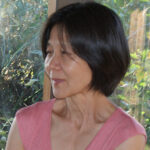 | ChenLei Chen | |
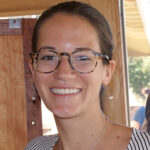 | ChoryEmma J. Chory | Emma was a bioengineering graduate student that discovered a new means of controlling histone modifications. Using the H3K79methylation as a model she found that nucleosome exchange was a major contributor to the dynamics of histone modifications over the genome. Her studies showed that one must think of writers, readers, erasers and exchangers of histone modifications. She is presently at MIT. |
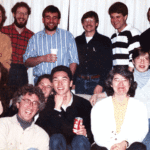 | ClipstoneNeil Clipstone | Neil demonstrated that calcineurin was a key component of the lymphyocyte activation pathway and furthermore mapped out the interaction between calcineurin and cyclosporin (Nature 1992). He also developed a way of activating transcription using FK506 to recruit an activation domain to a DNA binding domain (JBC 1993). This was the first use of the two sides of a single molecule for induced dimerization and lead the way to the use of rapamycin and related molecules for the same purpose. Neil is presently an Assistant Professor at Northwestern and can be reached at: NCL420@anima.nums.nwu.edu or see his web page. |
 | CourtoisGilles Courtois | Gilles discovered HNF-1 in 1985 while a post doctoral fellow in the laboratory and showed that it regulated a wide group of genes expressed in endodermal cells. He was an Investigator at the Pasteur Institute. gmcourt@pasteur.fr.and just recently moved to The Weizmann Institute of Science, 76100 Rehovot, Israel. See the August 2003 issue of Nature for a recent paper by Gilles group. |
 | DurandDavid Durand | David joined the lab when we moved to Stanford University. He defined the regulatory regions of the IL-2 gene, and with J.P. Shaw discovered the NF-AT transcription complex in 1987. David made the IL-2 luciferase plasmids in 1987 that have been distributed to thousands of laboratories worldwide. He went from our lab to the University of Vermont and is now a Professor at Stonybrook. |
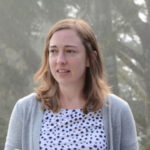 | DykhuizenEmily Dykhuizen | Emily worked together with Diana Hargreaves to define the mechanism of tumor suppression by BAF complexes. She also developed a screen for BAF inhibitors and found the first small molecule BAF complex inhibitor. Emily joined the faculty of Purdue University. |
 | EliasLaura Elias | Laura joined the lab as a post doctoral fellow after completing her graduate work in the lab of Arnold Kriegstein and carried out genomic and proteomic studies of the chromatin switch from npBAF to nBAF in the development of the nervous system. She also developed an efficient method of purifying neural progenitors and post mitotic neurons for genomic studies before deciding to take a position with a consulting firm in San Francisco. She can be reached at laura.elias5 at gmail.com |
 | EmmelBeth Emmel | Beth came to our laboratory as a technician from UC Santa Cruz and while in the lab discovered with David Durand that NF-AT was a specific target of cyclosporin and FK506 (Emmel et al Science 1989). She went from our lab to Vet School and is now a practicing vet specializing in small animals on the North Shore of Chicago. |
 | EvansElaine Evans | Elaine Evans came to the lab from the Department of Genetics at the University of Leichester in England. She work on expression methods for protein C and definition of the control sequences in Fibrinogen genes that were later used by Gilles Courtois to discover HNF1. |
 | FieringSteve Fiering | Steve Fiering was really a Hertzenberg lab graduate student that spent a lot of time in the lab and with Cor Verwei developed the NF-AT LacZ system now commonly used for measuring transcriptional activity in individual cells. He used this technique to show that genes seemed to be in an “off” or “on” state and hence appear to have a qualitative mode of regulation. Steve is now an Associate Professor at Dartmouth College in Hanover NH. |
 | FiorentinoDavid Fiorentino | David was a MD/PhD student in the lab and studied the mechanism of action of the Tor signaling pathway in yeast and mammalian cells. This is the pathway that is blocked by rapamycin. He found along with Calvin Kuo that rapamycin blocked the activation of p70S6 kinase, hence making the first steps in showing that this pathway regulated protein synthesis. He is presently on the faculty at Stanford University Hospital. His e.mail address is fiorentino@stanford.edu |
 | FlanaganMike Flanagan | Mike discovered that NF-AT was made up of two components, one (NF-ATc) was cyclosporin-sensitive and cytoplasmic and required calcium for activation (Nature 1991). The other component, (NF-ATn) was nuclear and newly induced. Mike also developed the first in vitro transcription system that faithfully reflects T lymphocyte activation requirements (Nature 1991). Mike just took over the leadership of Biology Research at Sunesis, started by Jim Wells in South San Francisco. |
 | ForaceAl Forace | Al worked with Jerry at the NIH and while the lab wrote a program to search the then newly accumulating DNA sequence data base to look for genomic repeats as evidence of gene mobility. Using this approach Al was the first to define large scale genetic repeats in the mammalian genome (Science 1983). He is now head of the Laboratory of Chemical Carcinogenesis at the NIH in Bethesda. Al can be reached at: af6z@nih.gov. |
 | FowlkesDana Fowlkes | Dana worked with Jerry at the NIH and used an early version of bioinformatics to define the control regions of genes coordinately regulated during the inflammatory response. This lead him to define the sequence GGGAATTCCC (PNAS 81:2313, 1984) which was later shown to bind NFkB. This same method defined the sequence that we later recognized as the HNF-1 binding sites. Dana joined the faculty of the University of North Carolina at Chapel Hill. He later founded Novalon and left the faculty of UNC to direct the company full-time. In June of 2000, he sold his company to Karo Bio. and joined their Board of Directors. Check the Wall Street Journal for details. |
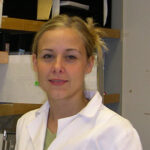 | GalloElena Gallo | Elena elucidated a genetic circuit of T lymphocyte development governing positive selection. She found that an early signal through Calcineurin and NFAT leads to the activation of a raf regulator required for competence to respond to positive selection signals at the double-positive stage. The work was published in Nature 2007. In addition, she found that the specificity of the immunosuppressant drugs cyclosporin A and FK506 is in part due to the selective use of this pathway in the development of hematopoetic cells. She is now at John Hopkins and can be reached at: galloem@gmail.com |
 | GestwickiJason Gestwicki | Jason came to our lab from Laura Kiessling’s laboratory. Laura was a graduate student of Stuart Schreiber, so Jason is a scientific grandson of Stuart. Jason did all of the chemistry and biophysics for the development of a new method of making inhibitors of protein-protein interactions (see Science 2004). His love of the midwest lead him to go to the University of Michigan. For a cool recent paper from Jason’s new lab see (J Biol Chem. 2006 Sep 14) He is now an assistant professor and can be reached at: gestwick@lsi.umich.edu |
 | GraefIsabella A. Graef | Isabella initiated many new areas of research in our lab including work on the development of the nervous system and the development of the cardiovascular system. She demonstrated that the assembly and patterning of vessels in the mouse embryo requires calcineurin signaling through NFATc3/c4 (Cell 2001). Much of the role of NFAT signaling appears to be mediated by regulation of VEGF expression. She initiated studies of the role of calcineurin/NFAT in the nervous system, demonstrating that these proteins were regulated by L-type calcium channels in adult neurons (Nature 1999) and responded selectively to stimuli of different frequency. She found that axon outgrowth in the early embryo in response to netin and neurotrophins (and perhaps other guidance cues) requires calcineurin B1 and NFATc2/c3/c4. Her work demonstrated that these guidance clues us calcineurin and NFATc proteins to accelerate the rate of advance of the growth cone, allowing it to meet developmental time deadlines (Cell 2003). To do this work Isabella worked with Fan Wang from Mark Tessier-Lavigne’s lab. Fan is now on the faculty at Duke. Isabella had the original insight that the defects in the NFATc and calcineurin mutant mice reproduced essentially all of the characteristics of Down Syndrome, leading to the discovery that overexpression of two genes, DSCR1 and Dyrk1a, in the critical region of chromosome 21accounted for many of the characteristics of this disease (Nature 2006). She now has her own lab at Stanford University and can be reached at: igraef@stanford.edu. |
 | HansenLinda Hansen | One of the first graduate students in the lab. Linda worked with Dirk Mendel to discover and characterize DCoH. She is now with her husband and children living happily at a secure but undisclosed location in Colorado having escaped from all this. |
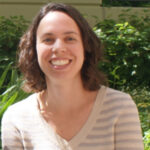 | HargreavesDiana Hargreaves | Diana worked with Emily Dykhuizen to discover the mechanism of tumor suppression by BAF complexes. She and Emily found that BAF allowed Topisomerase II to bind DNA and function, thereby preventing DNA damage. Diana joined the faculty at the Salk Institute. |
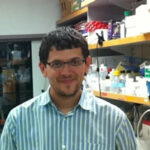 | HathawayNate Hathaway | Nate Hathaway made the Chromatin Indicator and Assay strain which allows one to study in vivo chromatin dynamics in living cells. He then worked with Oli Bell to develop methods to assay the memory of heterochromatin domains and devised methods to understand the features that regulate heterochromatin formation and dissolution. More recently he has applied this approach to a variety of other chromatin regulatory mechanisms to understand their in vivo mechanisms. In July 2013 Nate joined the faculty of the University of North Carolina. |
 | HoLena Ho | Lena was a Singapore A-Star student in the laboratory who pioneered genomic and proteomic studies of the mammalian SWI/SNF-like BAF complexes and discovered that ES cells have a specialized complex apparently devoted to pluripotency. Her studies also dispelled several old biases about how chromatin remodeling proteins function. She found that STAT3, an signaling transcription factor essential for LIF signaling and pluripotency is recruited to its sites of action over the genome by esBAF complexes, that these complexes are primarily repressors of transcription and that their specialized subunit composition engages the pluriopotency factors to provide robustness and stability to the pluripotent state. She discovered that an underlying mechanism of their role in gene activation is to remove polycomb marks over the genome, particular at sites of STAT3 function. She is now back in Singapore and can be reached at lena.ho at imb.a-star.edu.sg. |
 | HoSteffan Ho | Steffan developed the method of regulating transcription with synthetic ligands (Nature 382, 822, 1996) which was later taken up by Ariad and Jim Wilson’s gene therapy group and used for the first regulated effective gene therapy in primates. In addition, Steffan cloned NF-ATc1, c2 and NF-ATc3 with Jeff Northrop. Finally Steffan found that calicheamicin oligosaccharide bound to the NF-AT site in DNA and was an effective antigonist, providing the first steps in a path that will hopefully lead to small molecules that block protein-DNA interactions. Steffan is presently an Assistant Professor at UCSD and can be reached at: snho@ucsd.edu or see his web page. |
 | HoWen Qi Ho | Wen Qi Ho was an A+ student from Singapore that studied the role of the nuclear kinase Dyrk1a in the development of the immune system. She discovered that this kinase plays an essential function in T lymphocyte development and she is continuing to study the underlying mechanism. She returned to Singapore to do her post doctoral fellowship. |
 | HodgesCourtney Hodges | Courtney used a combination of bioinformatics and biochemical studies to demonstrate that the mutations in the ATPasae domain of BAF that underlie human malignancies and also neurodevelopmental abnormalities function as dominant negatives. He worked with Ben Stanton to find that these mutations effect the mobility of BAF or mSWI/SNF complexes over the genome in opposite ways but have common phenotypes. He joined the faculty at Baylor University. |
 | HolbrookNikki Holbrook | Nikki was the person that helped switch the interest of the lab to signaling back in 1983. She cloned the IL-2 gene and with David Durand defined the regulatory regions of the IL-2 gene. She and David began our march backward through the Ca2+/Calcineurin/NF-AT signaling pathway in 1982. Nikki inherited Jerry’s lab when he left the NIH. Later she became Chief of the Laboratory of Genetics at the NIA, NIH. Just recently she joined the faculty at Yale University. |
 | HolsingerLeslie Holsinger | Leslie found that the VAV exchange factor for rac was required for formation of the CAP or SMAC or immune synapse signaling complex on lymphocytes and also for T cell receptor signals to activate NFAT-dependent transcription and lead to T cell activation.. In addition, she used synthetic ligands to demonstrate that the SOS exchange factor could be activated by membrane proximity. She now works at Sugen in Redwood City and can be reached at: lholsing@sugen.com |
 | KadochCigall Kadoch | Cigall discovered the mechanism underlying synovial sarcoma and with Courtney Hodges also showed that mutations in the BAF complex contribute to over 20% of all human malignancy. She also developed a technique for recruiting the BAF complex to a endogenous gene and measuring the orderly sequence of biochemical events following recruitment. She joined the faculty at Harvard and recently published the connectivity within the BAF complex and the cryoEM structure of BAF. She was named Forbes magazine 30 under 30. |
 | KantJeff Kant | Jeff was the first post doctoral fellow. Jeff worked with Jerry on the cloning of the fibrinogen genes in 1980 and the finding that one gene could give rise to two messages and two proteins by alternative splicing (Cell 1981), which in 1981 was news. Jeff is now Professor of Pathology at the University of Pennsylvania. |
 | KaoShih-Chu Kao | Shi-Chu investigated the role of calineurin-NFAT signaling in the development of the neural crest. She found that calcineurin is essential for the production of myleinating Schwann cells. It appears to assume specificity in the Schwann cells by cooperating with Sox10 and controlling genes such as Krox20, which in turn directly controls the myelination genes.. This data was published in Science in Jan 2009. She recently became a research scientist at Tacere Therapeutics and can be reached at sckao1@gmail.com |
 | KhavariPaul Khavari | was a graduate student in the lab after completing a medical residency at Yale. Paul started the work in our lab on chromatin and was the first to define the mammalian BAF or mSWI/SNF complex (Nature 1993). He also worked with Steve Goff’s group at Columbia to show that the complex functioned as a tumor suppressor (Cell 1994) and interacted with HIV integrase (Science 1995). He received the Presidents Award the year after leaving the lab and is now an Associate Professor at Stanford University and is studying epithelial development and can be reached at : khavari@stanford.edu or see his web page. |
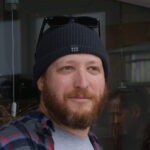 | KirklandJake Kirkland | Jake worked with Jose Seoane in Christina Curtis’ lab to find that sensitively to TopoII inhibitors was determined by a chromatin accessibility network. He also showed that members of this network including BAF predicted responses to TopoII inhibitor treatment in breast cancer. In April 2021 Jake joined the faculty of the OMRF. |
 | KlemmJulie Klemm | Julie Klemm developed the system for using synthetic ligands to regulate the export and hence inactivation of nuclear proteins. She used this to developed a quick and effective assay for nuclear export sequences. She went to work at Incyt after leaving the lab and now has her own group there. She can be reached at jklemm@incyte.com |
 | KohAndrew Koh | Andrew was interested in the mechanism of action of the Aire protein and its role in the development of tolerance in the immune system. He developed a system to rapidly and reversibly recruit it to a genomic locus and showed to everyone’s surprise that Aire was a transcriptional suppressor. He joined the faculty at the University of Chicago. |
 | KuoAnn Kuo | |
 | KuoCalvin Kuo | Calvin was a graduate student in the laboratory and defined the transcriptional hierarchy (Nature 355, 457, 1993) the elements of which are mutated in most cases of inherited diabetes. (MODY). He also made the first observation that rapamycin interfered with the pathways that control protein synthesis (Nature 1993), an observation that was later shown to underlie the mechanism of action of this drug in both yeast and mammalian cells. This was the critical step in defining a signaling pathway that was later shown to relate membrane signals to translational control. After spending some time at Harvard, Calvin came back to Stanford in November of 2000 as an Assistant Professor of Medicine.He can be reached at cjkuo@stanford.edu |
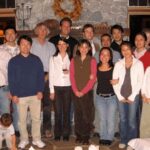 | LessardJulie Lessard | Julie Lessard carried out a detailed proteomic analysis of the ATP-dependent chromatin remodeling complexes in the nervous system which lead her to discover with Jiang Wu that the development of the vertebrate nervous system required a switch in chromatin remodeling complexes at mitotic exit. They showed that this switch from a neural progenitor or stem cell complex (npBAF) to a neuronal complex (nBAF) is critical for the development of the vertebrate nervous system. Since leaving the lab Julie has received the Munck Award and the Top 40 under 40 Award. Julie took a faculty position at the University of Montreal and can be reached at: j.lessard.1@umontreal.ca. |
 | LieberMichael Lieber | Michael, along with Nikki Holbrook, initiated the studies on signal transduction in the lab. He is now Professor of Pathology and Microbiology at USC/Norris Cancer Center in Los Angeles. His e.mail address is: lieber@hsc.usc.edu Jorge Plutzy: cloned the Protein C cDNA and gene while in the lab and studied human variations in the gene during the summers while he was a student at the University of North Carolina. This work was done in collaboration with the group at Eli Lilly. Scientist at Eli Lilly then developed it to the only effective treatment of sepsis. Protein C is estimated to save over 50,000 lives per year. He is now an Associate Professor at Harvard. He can be reached at: jplutzky@rics.bwh.harvard.edu |
 | LucianLinda Lucian | Linda joined our lab as a technician at the NIH and came with us to Stanford. She helped initiate several new technologies in our lab and in 1988 she joined DNAX (now SP-Bio) and managed the gene targeting group for many years. She is now managing her family here in Palo Alto. |
 | LuiKaren Lui | Karen used mice made by Kryn Stankunas in the lab, which contain a small-molecule regulated allele of GSK3b that could be rapidly stabilized to study the developmental roles of this protein. Her work defined a surprising function of GSK3b and was published in Nature 446,, 79-82, 2007. She along with Hank Bayle also showed that phenotypes in these mice could be rescued by small molecule administration. She moved to London in Dec 2006 and joined the Developmental Biology faculty of the University College of London. She can be reached at: karen.liu@kcl.ac.uk. |
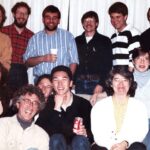 | MendelDirk Mendel | Dirk Mendel discovered and cloned DCoH as a cofactor for the actions of HNF-1a and HNF-1b (Science 1991). He is now Associate Director for pre-clinical therapeutics at Sugen in South San Francisco. He can be reached at dirk-mendel@sugen.com. |
 | MillerErik Miller | Eric was interested in the way that domains of heterochromatin are formed and also dissolved as cells differentiate. Surprisingly, he showed that BAF complexes work with Topo II to both resolve and form heterochromatin. |
 | MorganJohn Morgan | John Morgan came from Balintubber Ireland to the lab and defined the regulatory regions of the fibrinogen genes that Gilles later used to discover the HNF-1 transcription factor. HNF-1 was later shown by John Bell at the University of Chicago to be the major gene responsible for hereditary diabetes (MODY). John is presently a a senior lecturer (Associate Prof. in the U.S.) in the Department of Microbiology at University College Cork (UCC) Cork Ireland. j.morgan@ucc.i |
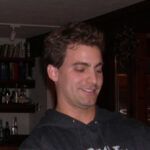 | NeilsonJoel Neilson | Joel made mice with a conditional allele of calcineurin B1, the ubiquitous regulatory component of calcinerin phosphatase complexes. He found that calcineurin was essential for positive but not negative selection of thymocytes. In addition, he worked with Ching-pin Chang in the lab to show that calcineirn and NFATc proteins are essential for a regulatory exchange between myocardial and endocardial cells that resulted in heart valve development. Joel’s alleles of calcineurin are now being used to define the role of calineurin in many aspects of mammalian development, revealing that it may be one of the most widely used signaling pathways in mammalian development. He is presently in Phil Sharp’s lab at MIT, working on the role of small RNAs in lymphocyte development. He can be reached at: jneilson@MIT.EDU. |
 | NorthropJeff Northrop | Jeff developed the method for purifing NF-AT and later cloned NF-ATc1 and c2 with Steffan Ho. He and Luika Timmerman also showed that NF-ATc family members shuttled into and out of the nucleus and that this shuttling allowed the discrimination of the Ca2+ signals originating from CRAC channels from those originating at IP3 gated intracellular channels. Jeff went to Affimax at exactly the right time and can be reached at: Jeff_Northrop@qmgates.affymax.com |
 | NourseJamie Nourse | Jamie showed that signals through the IL-2 receptor allowed cells to enter the cell cycle by controlling the degradation of p27. Jamie went to David Morgan’s lab for a post doctoral fellowship. Jamie has the record for the shortest time spent as a graduate student: 3.8 years. She has decided to take some time off with her husband and two children. |
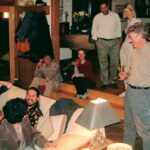 | OlaveIvan Olave | Ivan, Weidong Wang and Uxtong Wang discovered the first neuron-specific chromatin remodeling complex, which we call nBAF (for neuronal complex of Brg/Brm associated factors). They found that the brain specific complex is defined by BAF53b, an actin-related protein found only in neurons. Ivan went to University of Washington. He can be reached at: iolave@ispwest.com. |
 | PanMinggui Pan | Minggui made mice expressing NFATc1 at slightly higher levels in the nucleus and showed that slightly tipping the balance of nuclear NFATc1 will result in dramatic phenotypes in the developing mouse; leading to a fantastic increase in bone formation and to spontaneous T cell activation. His work indicates that the second signal (through CD28) required for T cell activation probably functions by slowing the rate of export of NFATc proteins from the nucleus. Minggui is an MD/PhD and decided that his first love was medicine and hence has taken up the full time practice of oncology. He can be reached at: Minggui.Pan@kp.org. |
 | ParkSang Ho Park | Sang Ho decided to go back to his home country of Korea after finishing his post doc in the lab and can now be reached at…..: He is working in an innovative fusion of the University of Korea and biotechnology. |
 | PolleriAlberto Polleri | Alberto came to our lab as a post doctoral fellow after receiving a degree in physics and provided the first quantitive model of Ca2+/Calcineurin/NFAT Signaling (Nature 2006). His modeling provided an understanding of this pathway in Down Syndrome and indicated that the triplication of the DSCR1(RCAN) gene and the Dyrk1a gene on chromosome 21 act synergistically to remove NFATc proteins from the nucleus, thereby producing a pan-NFAT hylomorphic state and many if not most of the characteristics of Down Syndrome. He also found that this synergy works with intrinsic feedback loops within the pathway in such a way that the pathway fails with minimal increases in the dosage of DSCR1 and Dyrk1a. His work may also explain why the most effective immunosuppressants (Cyclosporin A and FK506) work at concentrations that only inhibit 1/2 of the activity of calcineurin. Calcium-dependent pathways are proving to be among the best for quantitive modeling because of the precision with which Ca2+ can be measured. As of July 2009, Alberto is Head of the Quantitative Systems Biology Group at Imperial College in London. He can be reached at: alberto.polleri@csc.mrc.ac.uk |
 | RadamackerAmy Radamacker | Amy was an immunology graduate student that worked to understand the mechanisms underlying the role of calcineurin/NFAT signaling in lymphocyte development. She took over the work of Kirsten Cante-Barrett and later joined the McKinsey consulting company after leaving the lab and is now learning the ropes of the business world. |
 | RandoOllie Rando | Ollie was an MD/PhD student in the lab. He discovered that the mammalian SWI/SNF-Like BAF complex binds PIP2 and accelerates the rate of actin filament formation. He also studied the genomic transcriptional response to co-stimulation of T lymphocytes and demonstrated that CD28 induces quantitative rather than qualitative changes in gene activation. His work also lead to the realization that PI3 kinase regulated NFAT signaling by inhibiting nuclear GSK3 and preventing nuclear export of the NFATc proteins. He joined the Harvard Fellows program at the Institute for Chemical Biology and now has his own group at the University of Mass. For some of his recent publications see: Cell. 2008 Nov 28;135(5):789-91 and Science. 2007 Mar 9;315(5817):1405-8. |
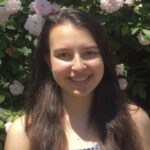 | RoepkeKyra Roepke | |
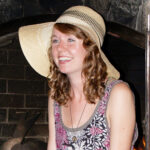 | RonanJehnna Ronan | |
 | SerafiniAndrew Serafini | Andrew Serafini was a shared graduate student with the Hertzenberg lab. He isolated somatic cell mutations that are not able to activate the cellular CRAC channels and hence demonstrated with Rich Lewis in the Department of Molecular and Cellular Physiology that the CRAC channel was essential for lymphocyte activation and NFAT transcriptional competence. Andrew decided to do patent law and is now working with a firm in Palo Alto. |
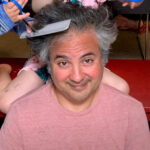 | ShaiziAry Shaizi | |
 | ShawJeng Peng Shaw | Jeng Peng Shaw with David Durand and Paul Utz identified NF-AT as a regulator of early activation genes in T cells that coordinate the immune response. J-P is now a Scientist at Advanced Medicine, Inc. in South San Francisco. |
 | SoodSabina Sood | Sabina was interested in the role of CHD8 in autism. CHD8 is a chromatin remodeler that is the most frequently mutated gene in autism. Her studies with Chris Weber revealed that CHD8 negatively regulates expression of neuronal genes to maintain pluripotency and also during differentiation. Thus, CHD8 is essential for both the maintenance of pluripotency and neural differentiation, providing mechanistic insight into its function with potential implications for ASD. |
 | SpencerDavid Spencer | David developed the method for regulating protein-protein interactions with synthetic ligands or Chemical Induces of Dimerization (CIDs) (Spencer et al Science 1993). Using this approach he showed that receptors such as the T cell receptor, the B cell receptor, the Fas receptor and many others can be regulated by simple proximity. He worked with Tom Wandless, a graduate student in Stuart Schreiber’s laboratory on this project. Tom is now an Associate Professor at Stanford University and David is an Associate Professor at Baylor University where is continuing to develop this system for gene therapy. David can be reached at: dspencer@bcm.tmc.edu or see his web page. |
 | StankunasKryn Stankunas | Kryn was a graduate student from Developmental Biology. He developed a method to regulate the stability of proteins using small molecules that bind to a tag on the protein and allow it to fold to a stable state. He made stains of mice with this tag inserted into the GSK3b gene and with Hank Bayle a strain with the same tag inserted into the Pax6 gene. This approach has proved to be very useful for the rapid, reversible regulation of genes at the level of the protein. Kryn is presently working with CP Chang and can be reached at Kryn@stanford.edu. |
 | StantonBen Stanton | Ben came from Stuart Schreiber’s lab and worked with Cigall Kadoch in our lab to show that BAF complexes rapidly and reversibly ejected polycomb complexes and that mutations in the ATPase domain of SMARC4 or Brg prevented polycomb eviction. |
 | ThomasDaryl Thomas | Daryl cloned NFATc3 while in the lab and then went to graduate school. He is currently a graduate student in Bioinformatics in the Haussleer lab at ucsc. He can be reached at: daryl@soe.ucsc.edu. You can find out what he is up to at: http://www.soe.ucsc.edu/~daryl/cv/cv.pdf. |
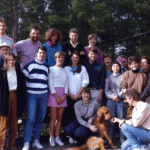 | TimmermanLuika Timmerman | Luika was a graduate student in the lab and made an important contribution to the understanding of the mechanism of discrimination of Calcium signals when she showed that the NF-ATc family of transcription factors have the ability to distinguish between calcium currents derived from the IP3 receptor versus the cell membrane CRAC channel (Nature 1996). She is presently a faculty position at the Cancer Institute at UCSF and can be reached at: timmerma@cc.ucsf.edu |
 | TooleJay Toole | Jay Toole worked in the lab during the time he was a medical student at Stanford after cloning Factor VIII at Genetics Institute. He is presently director of clinical research at Gilead. |
 | UllmanKatie Ullman | Katie was a graduate student in the laboratory and defined the regions of the IL-2 promoter essential for its activity. She purifed jun D as a regulator of IL-2 (Ullman Science 1990) and is now an Assistant Professor at the University of Utah where she is studying the mechanisms underlying nuclear import and export. .Katie can be reached at: Ullman@hci.utah.edu. To read more about what she is doing, go to her web page at: www.hci.utah.edu/ullmanlab |
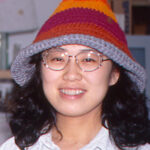 | UtongUtong | |
 | UtzPaul Utz | Paul Utz: worked in the lab as a medical student and named NF-AT transcription complexes. For those of you that hate the name, he is entirely to blame. After a short time as an Assistant Professor at Harvard he joined the faculty at Stanford University and is now working on autoimmunity. Pjutz@leland.stanford.edu |
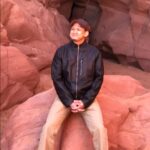 | ValdefieraAlex Valdefiera | |
 | VerweiCor Verwei | Cor Verwei developed the approach of using small binding sites to regulate indicator genes in transgenic mice (JBC 265, 1990) and showed that NF-AT activity was present in many different cell types. He is presently a Professor at the University of the Netherlands studying autoimmunity. He can be reached at verweij@abcoude.com |
 | VogelKurt Vogel | Kurt came to our lab from the Chemistry Department at Stanford and worked on a general method of using the borrowed surface of endogenous intracellular proteins to make high affinity small molecule inhibitors. He is now Senior Scientist, R&D at PanVera Corporation, happily back in his favorite place in the world: the midwest and can be reached at: KurtV@panvera.com |
 | WanMimi Wan | Mimi and Tian Chi worked together as a husband-wife team on defining the developmental roles of the mammalian SWI/SNF or BAF complex in both T cell development and neuronal development. Tian Chi: Tian set out to understand the biologic actions of the SWI/SNF-like BAF complex. By making mice with mutations in the DNA binding domain of BAF57 he demonstrated that the DNA binding domain of BAF57 likely plays a critical role in targeting the complex to its target genes. Tian’s work also lead to the realization that the complex coordinately suppresses CD4 and activates CD8 to control the T cell developmental lineage. Tian also used a conditional allele of Brg1to show that Brg1 was essential for both Wnt and TCR directed developmental transitions in the thymus. Tian joined the faculty at Yale in Oct of 2003 and is now an Assistant Professor of Microbiology and Immunology. |
 | WeberChris Weber | Chris discovered that BAF complexes repress the hox genes in ES cells by a remarkable mechanism in which the complexes evict polycomb at many sites over the genome allowing it to rapidly accumulate and repress the hox genes. |
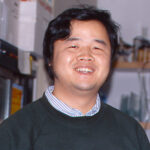 | WeidongWeidong Wang | Weidon Wang developed an effective method for purification of the mSWI/SNF or BAF complex and with his wife Xutong, cloned nearly all of its components. With Keji Zhao, Weidong found that it contained an actin like gene and also b actin. Weidong was the first to show that mammalian chromatin remodeling complexes are combinatorially assembled. This discovery greatly expanded the regulatory potential of these complexes which were considered to be monomorphic prior to Weidongs work. Weidong was the second person to receive the Presidents Award from our lab and is presently a Senior Investigator at the Laboratory of Genetics, NIA, NIH. He can be reached at wangw@webmail.grc.nia.nih.gov or at his web page. |
 | WinslowMonte Winslow | Monte was a graduate student in the lab and explored the role of calcineurin/NFAT signaling in the development and function of the immune system. He worked with Joel Neilson to demonstrate that signaling by calcineurinB1 was essential for positive selection of T lymphocytes and for immunogenic but not the tolerogenic role of B cells (Immunity 2006). Monte with Mingque Pan also found that slightly increasing the concentration of NFATc1 in the nuclei of osteoblasts resulted in fantastic deposition of bone and perhaps the boniest mouse in history (Dev Cell 2006). Monte also worked with Jeremy Heit in Seung Kim’s laboratory to demonstrate that calcineurin, acting through NFATc1 was essential for the development and function of pancreactic b cells, and that it might play a role in diabetes by regulating the MODY genes (Nature 2006). Monte went to Tyler Jack’s lab at MIT. He can be reached at mwinslow@MIT.EDU. |
 | WuHai Wu | Hai studied the role of calcineurin-NFAT signaling in the development of the vertebrate nervous system. He found that mice with mutations in the components of the pathway lack certain neuronal cell types and have cell fate transitions. This phenotype appears to reflect an intersection with the Hedghog pathway. He is settling into a new job at Amgen and can be reached at: hw2321@yahoo.com |
 | WuJiang Wu | Jiang Wu along with Julie Lessard discovered that the development of the vertebrate nervous system required a switch in chromatin remodeling complexes at mitotic exit. They showed that this switch from a neural progenitor or stem cell complex (npBAF) to a neuronal complex (nBAF) is required for a progression from neural stem cell self renewal to later role dendritic morphogenesis after mitotic exit. Jiang left the lab in Dec of 2008 to become an Assistant Professor at UT Southwestern and can be reached at jiangwu8828@gmail.com |
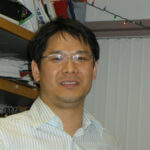 | YooAndrew Yoo | Andrew came to our lab after doing groundbreaking work in C. Elegans in Iva Greenwald’s laboratory. He discovered a triple negative genetic circuit that controls the switching from the npBAF to nBAF complex. Andrew showed that switch is initiated when miR9 and 124 repress BAF53a leading to the complete conversion of the chromatin remodeling complexes. During the course of these studies he found that recapitulating this switch in fibroblasts causes them to develop into neurons. The microRNA/chromatin switch leads to the production of fully functional human neurons from fibroblasts that form synapses without the help of added rat or human neurons. In addition, he showed that this mechanism of forming neurons leads to the production of inhibitory interneurons that form IPSP’s which has not been seen before for other means of making neurons. His studies have shown for the first time that a chromatin switch can be part of instructive pathways for cell fate determination. He joined the faculty of Washington University and can be reached at: yooa at wusm.wustl.edu. |
 | ZhaoKeji Zhao | Keji is now a Senior Investigator at the Laboratory of Molecular Immunology at the NIH. He discovered that the mammalian SWI/SNF-like BAF complex contains b-actin as well as an actin-like protein and that actin plays a role in regulating the ATPase activity of the chromatin remodeling complex. One of his recent paper can be found in the Oct 2001 issue of Cell. Since then he went on to develop the methods of genome wide mapping of chromatin and transcriptional regulators (Chip-SAGE and CHIP-Seq Methods). Some of Keji’s recent work includes: Cell. 2008 Mar 7;132(5):887-98 and Cell. 2007 May 18;129(4):823-37. He can be contacted at zhaok@mail.nih.gov. |
Past Lab Members
